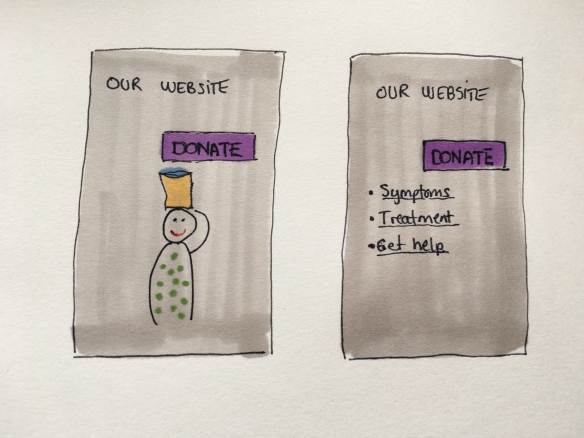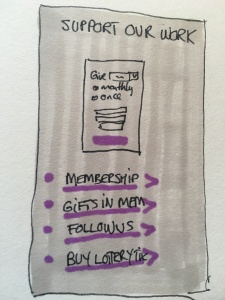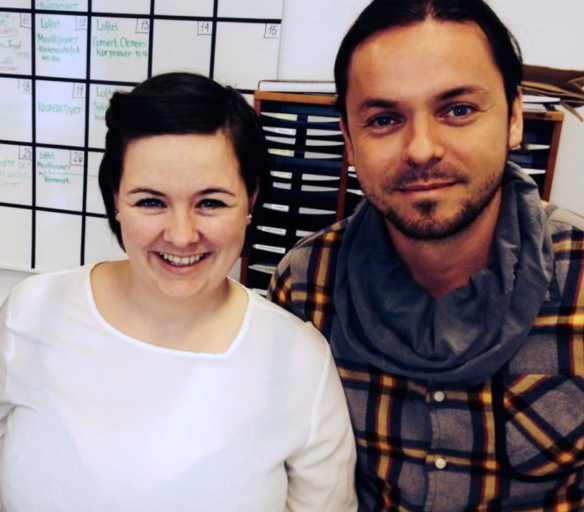A question that I get asked all the time, is “what is the average conversion rate on a non-profit website?”. I can’t count the number of times I’ve had this discussion. And my view is always the same; there is no such thing! I get it, the wish for a standard to compare your performance to that of others, I do. But what I’ve found is that such comparison is impossible, and more often that not hurtful rather than helpful. There are too many variables, it’s almost always apples and oranges.
Like – what are we even calculating conversion rate of and from? You would need some pretty damn similar conditions to even make a number work. I’ll get back to this point.
There are reports, of course, from various service providers and studies done. Some say industry standard conversion rates are 18%. Some say the standard is 9%. Just the big discrepancies between studies, should tell us that these are not very useful numbers.
But inaccuracies is not my biggest concern. Wrong conclusions, and wrong investments, are.
Why comparing conversion rates might make you spend money the wrong place
Say you know the industry standard conversion is 18% – this is calculated from a stand-alone donation page with a form on it, and nothing else. On your form, the conversion rate is 15%. So now, you will want to invest in improving it. Is that necessarily the right investment? Let’s do some math (don’t worry – I’ve done the math, you can just follow along and sing a happy song while I’m calculating):
Original scenario
You have 10.000 monthly visitors to your home page.
1% of visitors go to your donation page (100 users)
15% convert = 15 donations / signups per month.
Improved conversion rate scenario
You invest to get your conversion rates up to 20% – above industry standard even!
You still have 10.000 monthly visitors.
1% still go to the form (100 users)
20% convert = 20 donations / signups per month.
Same conversion rate, improved traffic scenario
Now. Say you’ve listened to me and realised that industry standards on conversion rates don’t exist, and you take a look at your whole online donor journey instead. You realise that you could make some changes to your storytelling pages, to get more people on to the donation forms.
You still have 10.000 monthly visitors.
5% of users now go to your form (500 users)
15% (as originally) convert = 75 donations / signups per month.
So an investment in conversion rates would have given you 5 more donors a month, while an investment in other web things would give you 60 more donors a month.
This is a simplified example, of course, and I don’t think people who look for conversion rate comparisons ignore other factors. It’s just to show how useless that number is, unless you can be absolutely sure that all other factors have been accounted for.
Too many different needs and goals on different pages
But, some say, what if we look at conversions as a total of all people visiting a page, surely we could compare them then?
Short answer: No.
Look at these two different mock-ups, one portraying a page for a cause (a fake water charity in this case), where all they do is raise money. And the other one portraying a page for a disease charity, where patients and next of kin would come for information and support in addition to giving.

Two different types of website – one fundraising focused, one service focused
It seems obvious now that these two different pages should, and have, different conversion rates. Most people who come to the first page are there to give – most people who come to the second page are not. These are things we have to consider when we look at conversion rates. This is a huge part of why it hardly ever makes sense to compare to others than yourself.
“But I mean the *main* donate page”
Listen. The only reason you even think of a “main donate page”, is probably because it hasn’t occurred to most web designers to just put the damn form right there on the home page yet. This is what happens when everyone just follows everyone else’s lead. “Everyone else has a donate now button in the upper right hand corner? Then so will I”.
Comparing rates here will just stymie innovation and creative thinking.

A mockup of what a page with the from right there on the home page would look like.
Plan Norway has executed some fresh thinking here beautifully, with a really user friendly and conversational sponsor-a-child form right there on the home page. As has Norwegian Church Aid, with a form in the middle of the home page that changes depending on the current need of the organisation. (You can run them both through google translate to understand them, but I recommend keeping the originals open, as GT tends to break design a lot.)
I would say it is quite likely that these pages have much lower conversion rates than a traditional stand-alone donation form page. I also say it is quite likely that they would bring in a lot more donors. And surely, that’s the more important figure?
Lower conversion rates can be a good thing

Mockup of a standard support us-page, with all the options stacked and completion taking place on a stand-alone page
On your typical “support us” page, the standard is to just list all the different ways to give, and then lead people on to stand-alone pages for task completion. Because that is what everyone else does (again I am simplifying). When I worked at the Norwegian Cancer Society, we changed all this in our redesign, combining one-time giving and regular giving in one form, putting it at the top of the page. All the other ways of giving – in memory, becoming a member, legacies, etc – were below the form.

Mockup of support us-page with the form on top, and other options stacked underneath
Guess what the result for conversion rates on the new page were? They went down – drastically. Because our form was now on a page with several exit points, like gifts in memory. An option that unfortunately a lot of people come for if you are a cancer charity. But guess what happened to the number of donors? The number of people signing up for monthly gifts increased nearly 10 x over three years. So again – what number should we worry about?
So, should I just never look at conversion rates then?
I’m not saying never look at conversion rates. I’m just saying don’t look for a standard where no standard could possibly exist. I’ve been known to compare conversion rates myself – but only when I know all the other factors involved so that I know I am in fact comparing apples and apples.
Your conversion rate is one of the most important numbers to know – just don’t compare it to anyone else’s unless you know they really are comparable. Look at your whole online donation journey. Identify weaknesses. Form hypothesis to improve them. Test it. Did it give you more donors / lower costs / whatever measurement you decided on in advance? Implement. Conversion rate should be one of many important KPI’s you use. It’s not the one holy grail of web metrics it is often held up to be.
Are we good? Can we stop asking what the conversion rate should be now? Thanks 🙂












